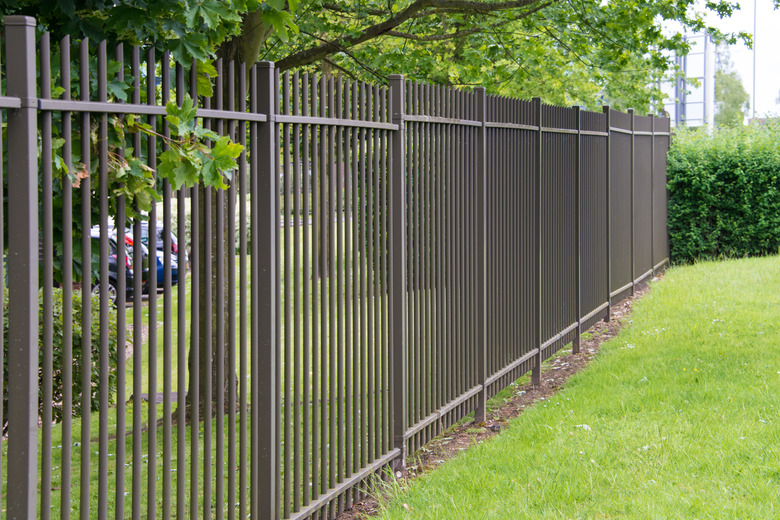How Can I Get Rid Of Grass Under My Fence?
We may receive a commission on purchases made from links.
While fences might make good neighbors, they also prove to be a real annoyance when grass and weeds grow underneath. The grass grows unchecked and becomes an unsightly mess, weaving through chain links or shooting up through cracks. The mower can't quite reach under there, and the string trimmer whacks away at fence posts, sometimes causing damage.
The best solution — getting on your hands and knees with your pruners or pulling out grass by hand — is downright tedious. Fortunately, there are a few remedies for killing unwanted grass and blocking it from growing under your fence, making basic lawn maintenance much easier.
Removing Grass With Herbicides
Removing Grass With Herbicides
You can remove grass from under your fence with a nonselective herbicide, like glyphosate. Herbicides should be used during the active growing season (for many people, grass isn't growing in winter) so that the plants will take up the chemicals. Don't use herbicides on a windy day or just before a rain and don't water the area you've sprayed within 48 hours.
Warning
Read and follow all directions provided on your herbicide's label and Material Safety Data Sheet regarding safety precautions, application and reapplication, required safety gear, cleanup, storage, and disposal.
While glyphosate is effective, you may prefer to spray with something less harsh, especially because it must be reapplied every time the grass grows back. Many homeowners create a spray of vinegar and dish soap for killing unwanted grass. However, while vinegar is effective at burning down plants, keep in mind that it doesn't kill roots and must be reapplied frequently. Unless you want to cause long-term damage to any surrounding plants, never add salt to a homemade herbicide.
Remove Grass by Solarizing
Remove Grass by Solarizing
Another effective method for removing grass is by solarizing the soil — covering the weeds and heating them in the sun until they die. First, use grass clippers to cut the grass close to the soil. Then, use a strip of clear plastic or a folded tarp and lay it underneath the fence over the grass you want to kill. Use bricks or stones to weigh down the plastic and wait for the heat of the sun to do its work. This process works fastest in hot summer months, generally taking two to three weeks.
Block Grass With Landscape Fabric
Block Grass With Landscape Fabric
Herbicides and solarizing provide a temporary reprieve, but you'll need to block the grass from returning for a more permanent solution. One method is to add landscape fabric under the fence. On the plus side, the material is inexpensive and can be hidden underneath an attractive layer of mulch. On the downside, weeds can take root over the top of the fabric, your soil's health can suffer from a lack of water and air, and the material will eventually degrade.
Cut strips of fabric to the size you need and lay them underneath the fence, making sure to overlap strips by 6 inches to prevent weeds from creeping through. Use landscape fabric staples to secure the fabric, pounding one in on both sides of the fabric every few inches. Then, cover your fabric with up to 3 inches of organic mulch or gravel depending on the look you prefer.
Block Grass With a Mow Strip
Block Grass With a Mow Strip
You can install a mow strip under your fence that is made of more durable materials to create a longer-lasting barrier for grass. Some homeowners make their own mow strips with bricks or pavers. (Unfortunately, weeds can occasionally pop up between pavers and need to be pulled by hand.) You can also use commercially made landscaping borders as a mow strip. These are typically made from rubber and look less natural, although some are texturized for a more organic appearance.
